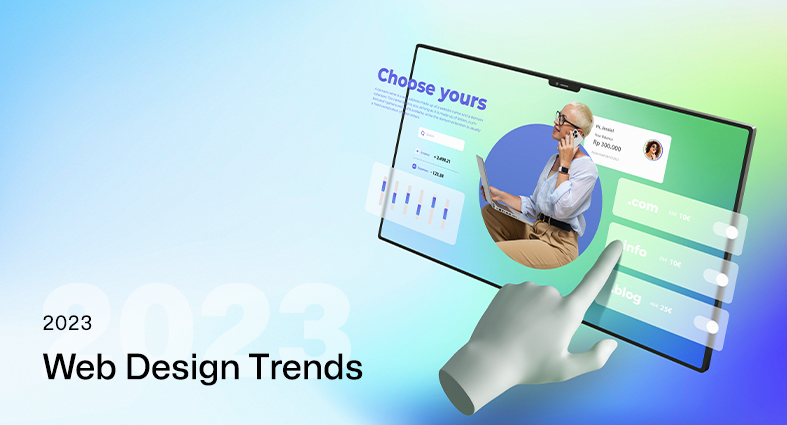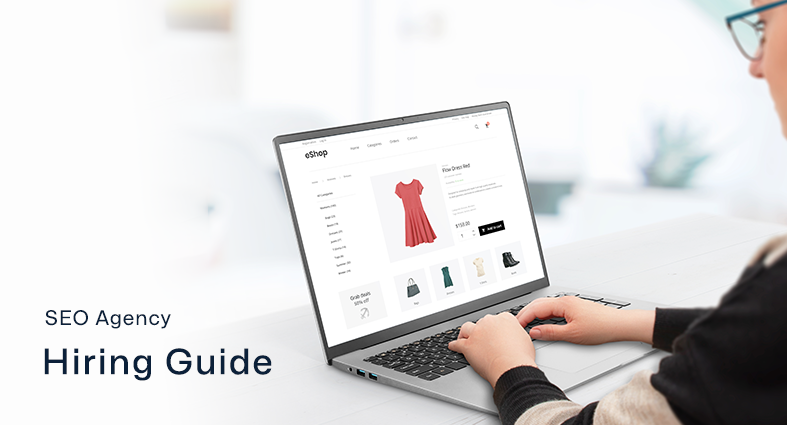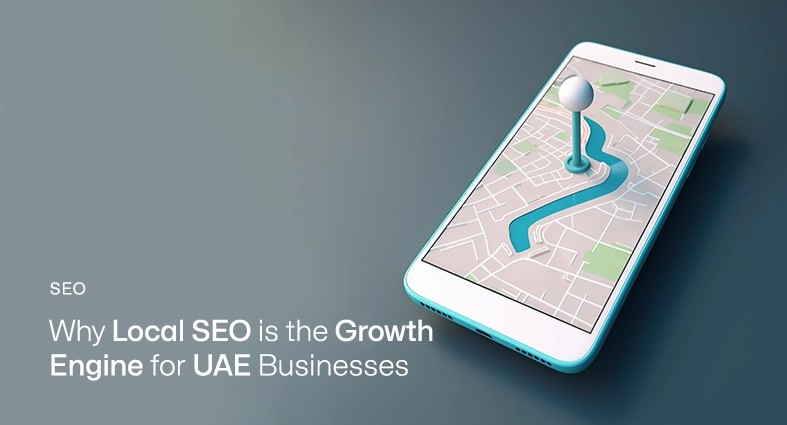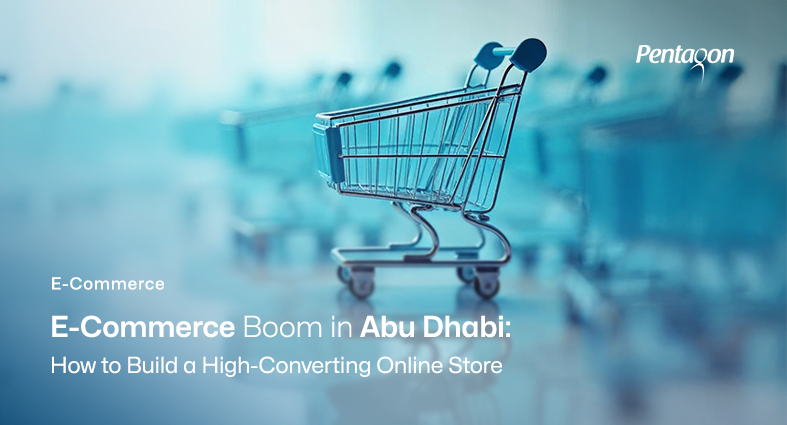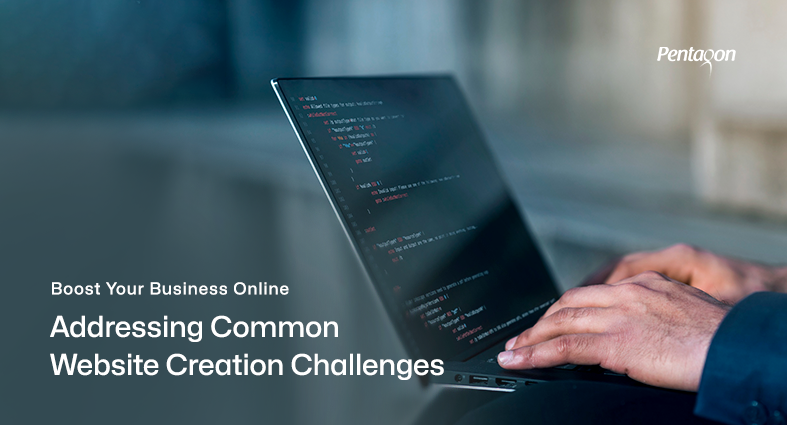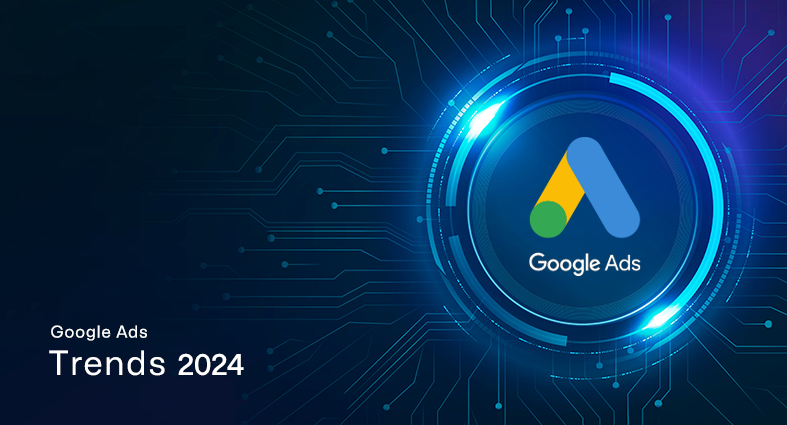Are you ready to take your online presence in Abu Dhabi to new heights? Look no further than the impact of web design on your search engine optimization (SEO) efforts. In the competitive online landscape, businesses strive to be visible to their target audience. This visibility largely depends on search engine rankings, as higher rankings lead to increased visibility and organic traffic. SEO encompasses various strategies and techniques to optimize websites and improve their rankings on search engine results pages (SERPs). While SEO primarily focuses on content optimization, keyword research, and backlink building, the design of a website also plays a crucial role in influencing these factors. In this comprehensive guide, we delve into the intricate relationship between web design and SEO strategies, specifically tailored for businesses in Abu Dhabi. From the structure and speed of your website to its mobile responsiveness and user experience, every element plays a vital role in boosting your search engine rankings. Discover how effective web design practices can empower your SEO efforts, attract more organic traffic, and ensure online success in the bustling digital landscape of Abu Dhabi. Get ready to unleash the true potential of your website through strategic web design and drive your online presence to new heights.
Importance of Website Structure for SEO
Search engines rely on website structure to determine the relevance and importance of your web pages. A clear and well-defined structure makes it easier for search engines to comprehend the hierarchy of your content, ensuring that they index and rank your pages accurately. A poorly structured website can confuse search engines, leading to missed opportunities for visibility and lower rankings. An organized and logical structure helps search engines navigate and rank your web pages effectively, improving your chances of higher search engine rankings and increased visibility. Let’s explore the key aspects of website structure that impact SEO.
Implementing Clear and Logical Website Navigation
Clear and user-friendly website navigation is crucial for both users and search engines. It helps visitors find the information they’re looking for easily and encourages them to explore your website further. From an SEO perspective, intuitive navigation allows search engine crawlers to discover and index your web pages more efficiently. When designing your website’s navigation, focus on simplicity and clarity. Use descriptive labels for menu items and ensure a logical hierarchy that reflects the organization of your content.
Creating an Organized Hierarchy of Web Pages and URLs
Creating an organized hierarchy of web pages is essential for effective website structure. This hierarchy helps search engines understand the relationships between different sections of your website and the importance of each page. Consider the overall structure of your website and organize your content into categories and subcategories. Each page should serve a specific purpose and be placed in the appropriate category. Furthermore, optimizing your URLs to reflect this hierarchy helps search engines interpret your website’s structure more accurately.
Optimizing Internal Linking
Internal linking plays a crucial role in SEO by establishing connections between different pages and distributing link equity throughout your site. Strategic internal linking improves crawlability, allowing search engine bots to discover and index your pages more easily. By linking relevant pages together, you also signal to search engines which pages are more important and help them understand the context and relevance of your content. Additionally, internal linking enhances user experience by guiding visitors to related information within your website. Optimizing internal linking involves using descriptive anchor text that includes relevant keywords, avoiding excessive linking that could dilute the value of each link, and ensuring that important pages receive sufficient internal link juice. By optimizing your internal linking structure, you improve the visibility of your web pages, enhance the user experience, and help search engines understand the overall structure and significance of your website.
Site Speed and its Impact on SEO
Site speed plays a crucial role in SEO as it directly impacts both user experience and search engine rankings. Websites that load quickly are favored by search engines as they prioritize delivering the best experience to users. Slow-loading pages not only frustrate visitors but also negatively affect bounce rates and engagement metrics, which can ultimately harm SEO performance. Optimizing site speed involves various techniques, such as compressing images, minimizing HTTP requests, leveraging browser caching, and optimizing code and file sizes. These strategies ensure that web pages load efficiently and reduce the waiting time for users.
Strategies for Optimizing Website Loading Speed
- Compressing Images and Optimizing File Sizes: Large image files can significantly slow down a website’s loading speed. By compressing images without compromising their quality, you can reduce their file sizes, resulting in faster loading times. There are various image compression tools and plugins available that automatically optimize images without sacrificing visual appeal. Additionally, using the appropriate file formats, such as JPEG or PNG, depending on the content, can also help reduce file sizes and improve loading speed.
- Minimizing HTTP Requests: Each element on a web page, including images, scripts, and stylesheets, requires an HTTP request to the server. The more requests a page makes, the longer it takes to load. To optimize loading speed, it’s crucial to minimize the number of HTTP requests. This can be achieved by combining multiple CSS and JavaScript files into a single file, using CSS sprites to combine multiple images into a single image, and removing unnecessary or redundant scripts and stylesheets.
- Leveraging Browser Caching: Browser caching allows certain files, such as images, scripts, and stylesheets, to be stored on a user’s device after their initial visit to a website. When the user revisits the site, the browser retrieves these cached files instead of requesting them from the server again. By leveraging browser caching, you can significantly reduce load times for returning visitors. You can set the expiration date or time for specific files to ensure that the browser retrieves the latest version when necessary.
Mobile Responsiveness and SEO
With the increasing use of mobile devices for internet browsing, search engines have recognized the importance of delivering a seamless mobile experience to users. Consequently, mobile-friendliness has become a crucial factor in search engine rankings. Websites that are not optimized for mobile devices may experience lower visibility in search results, which can significantly impact their organic traffic and overall SEO performance. To cater to the diverse range of screen sizes and resolutions across different mobile devices, it is essential to design responsive websites. Responsive web design ensures that the layout and content of a website automatically adjust and adapt to the screen size on which it is being viewed. By employing flexible grids, fluid images, and media queries, web designers can create a visually appealing and user-friendly experience on any device, be it a smartphone, tablet, or desktop.
Implementing Mobile-Friendly Navigation
When designing for mobile responsiveness, it is crucial to consider the ease of navigation on smaller screens. Implementing mobile-friendly navigation, such as hamburger menus or collapsible menus, allows users to access different sections of the website without feeling overwhelmed by excessive content. Additionally, incorporating touch-friendly elements, such as larger buttons and interactive components, enhances the user experience by making it easier for users to interact with the website using touch gestures.
Utilizing Mobile Optimization Techniques
To further optimize the mobile experience and improve page loading speed, web designers can leverage mobile optimization techniques, such as Accelerated Mobile Pages (AMP). AMP is an open-source framework that allows for the creation of lightweight and fast-loading mobile web pages. By adhering to the guidelines and specifications of AMP, web designers can ensure that their mobile pages load quickly, reducing bounce rates and improving user engagement.
User Experience (UX) and SEO
User experience (UX) plays a vital role in search engine rankings. Search engines strive to deliver the best possible results to their users, and they consider factors that enhance user experience when determining the ranking of websites. Websites that provide a positive and user-friendly experience are more likely to rank higher in search engine results pages (SERPs). Increased engagement and positive user behavior signal to search engines that the website is valuable and relevant, leading to improved rankings.
Designing Intuitive and User-friendly Interfaces
To optimize the user experience, it is essential to design intuitive and user-friendly interfaces. A well-designed interface ensures that visitors can easily navigate and interact with the website. Intuitive navigation includes clear and logical menus, well-labeled buttons, and easy-to-understand site architecture. User-friendly interfaces also consider factors such as responsive design, ensuring that the website adapts and functions seamlessly across different devices and screen sizes.
Optimizing Page Layout and Readability
The layout of a web page plays a crucial role in user experience and SEO. Optimizing page layout involves creating a visually appealing and organized design that guides users through the content effectively. Key elements such as headings, subheadings, and paragraphs should be structured logically, making it easy for users to scan and understand the information. The use of whitespace, images, and other visual elements can also enhance readability and engagement. Well-structured and readable content improves user experience and encourages users to stay longer on the website, reducing bounce rates and increasing the likelihood of conversions. Search engines recognize these positive user signals and may reward websites with higher rankings.
Reducing Bounce Rates
Bounce rate refers to the percentage of users who leave a website without interacting with any other pages or taking any actions. A high bounce rate indicates that users did not find what they were looking for or were dissatisfied with their experience on the website. High bounce rates can negatively impact SEO rankings. Engaged users who spend more time on a website, visit multiple pages and take actions such as filling out forms or making purchases send positive signals to search engines. These engagement metrics can contribute to higher rankings as search engines interpret them as indicators of a valuable and user-friendly website.
Content and SEO Alignment
One of the key aspects of successful web design for SEO is the alignment of web design elements with the content on your website. When these two elements work harmoniously together, they can greatly enhance your SEO efforts.
- Aligning with content: To achieve enhanced SEO, it is crucial to align your web design elements with your content strategy. This means that the design elements, such as fonts, colors, and overall layout, should complement and enhance the message conveyed by your content. For example, if you have a website with a professional tone and target corporate clients, the design elements should reflect professionalism and sophistication.
- Using heading tags: Headings play a significant role in both content organization and SEO. By using appropriate heading tags, such as H1, H2, and H3, you create a hierarchical structure for your content. This structure helps search engines understand the relevance and importance of different sections of your content. Additionally, using heading tags with relevant keywords can further optimize your content for search engine visibility.
- Optimizing meta tags: Meta tags, specifically title tags and meta descriptions, provide concise summaries of your web pages to search engines and users. Optimizing these meta tags is crucial for SEO as they influence how search engines index and display your web pages in search results. Ensure that your title tags are descriptive, contain relevant keywords and accurately reflect the content of the page. Meta descriptions should also be enticing and compelling to encourage users to click through to your website.
- Incorporating keywords in headings, subheadings, and body text: Keywords are fundamental for SEO success, and incorporating relevant keywords strategically throughout your content is essential. This includes using keywords in headings, subheadings, and body text.
Image Optimization for SEO
Image optimization plays a crucial role in enhancing the SEO performance of a website. Optimized images not only improve the loading speed of web pages but also contribute to better user experience and search engine visibility. Images that are properly optimized can attract organic traffic through image search results and improve the overall SEO value of a website.
- Compressing Images: Compressing images is an essential step in optimizing them for the web. By minimizing the file size, web pages load faster, leading to a better user experience and improved SEO performance. Various tools and techniques are available to compress images, including lossless compression algorithms that remove unnecessary data from images while maintaining their visual integrity.
- Descriptive Filenames and Alt Tags: Descriptive filenames and alt tags are vital elements of image optimization. When naming image files, it is important to use relevant keywords that accurately describe the content of the image. Alt tags, on the other hand, provide alternative text that is displayed when an image cannot be loaded or read by screen readers. Including descriptive alt tags with targeted keywords helps search engines interpret the image’s content and improves accessibility for visually impaired users.
- Implementing Image Sitemaps: Image sitemaps are XML files that provide search engines with valuable information about the images on a website. By including images in an XML sitemap and submitting it to search engines, website owners can ensure that their images are properly indexed and appear in relevant search results. This improves the visibility of images and increases the chances of driving organic traffic through image searches.
Web Design and Local SEO in Abu Dhabi
Incorporating web design elements that align with local SEO strategies is crucial for businesses targeting a local audience in Abu Dhabi. Customizing web design to target specific Abu Dhabi searches helps businesses appear in location-specific search results and improve their local SEO visibility. This can be achieved through the inclusion of Abu Dhabi-specific keywords and location-based information within the content and metadata of the website. Optimizing Google My Business (GMB) listings and local citations, as well as encouraging online reviews and testimonials, further enhances local SEO performance. By aligning web design with local SEO strategies, businesses in Abu Dhabi can increase their chances of attracting relevant local traffic and gaining a competitive edge in the local market.
Target local Abu Dhabi searches
To maximize your local SEO efforts in Abu Dhabi, customizing web design elements to cater to the specific needs of the local audience is crucial. By tailoring your website’s design to target local searches, you can increase your visibility in Abu Dhabi-specific search results and connect with your target audience more effectively. This involves incorporating elements that resonate with the local culture, preferences, and trends. Consider using local imagery, colors, and design elements that reflect the essence of Abu Dhabi. This helps create a sense of familiarity and connection with the local audience, making them more likely to engage with your website. Additionally, featuring local landmarks or recognizable symbols can further enhance local appeal.
Incorporating Abu Dhabi-specific keywords
Another essential aspect of web design for local SEO in Abu Dhabi is incorporating Abu Dhabi-specific keywords and location-based information throughout your website. Conduct keyword research to identify the terms and phrases commonly used by the local audience when searching for products or services related to your business. Integrate these keywords naturally into your website’s content, headings, meta tags, and URLs. This helps search engines understand the relevance of your website to Abu Dhabi-based searches, increasing the likelihood of appearing in local search results. Prominently displaying your Abu Dhabi address and contact information on your website signals to search engines and users that your business operates in the local area. This boosts your local SEO efforts and helps potential customers find and engage with your business more easily.
Optimizing GMB listing and local citations
Optimizing your Google My Business (GMB) listing and local citations is a crucial aspect of web design for local SEO in Abu Dhabi. Claim and verify your GMB listing, ensuring that your business information is accurate, up-to-date, and complete. Optimize your GMB listing by selecting relevant categories and adding detailed descriptions that highlight your products or services. Include high-quality photos that showcase your business and its offerings. Encourage customers to leave reviews on your GMB listing, as positive reviews can significantly impact your local SEO rankings. Ensure that your business information, including NAP, is consistent across all online directories, review sites, and local business listings. This consistency helps search engines verify the credibility and legitimacy of your business, boosting your local SEO efforts.
Encouraging Online Reviews and Testimonials
Online reviews and testimonials from satisfied customers carry significant weight in local SEO. Positive reviews signal to search engines and potential customers that your business provides exceptional products or services. Encourage your customers to leave reviews on your website, GMB listing, and other relevant review platforms. Featuring testimonials from satisfied customers on your website can further enhance your local SEO efforts. Testimonials add credibility and trustworthiness to your business, influencing potential customers’ decision-making process. Include relevant location information in the testimonials to reinforce your local presence.
Continuous Optimization and Monitoring
Optimizing your web design is not a one-time task; it requires continuous efforts to stay ahead in the ever-changing digital landscape. Ongoing web design optimization is crucial for maintaining and improving your website’s SEO performance. By regularly evaluating and enhancing your design elements, you can ensure that your website remains optimized for search engines and user experience.
Conducting Regular Audits
Regular audits are essential to identify and rectify any design-related issues that may affect your SEO. Conducting periodic audits allows you to assess the effectiveness of your current design strategies and identify areas for improvement. By analyzing your website’s performance, user behavior, and SEO metrics, you can pinpoint any design elements that may be hindering your rankings or user experience. This enables you to take proactive measures to fix these issues and enhance your website’s overall performance.
Monitoring Website Performance, User Behavior & Search Engine Rankings
Monitoring key metrics related to your website’s performance, user behavior, and search engine rankings provides valuable insights into the effectiveness of your web design. By tracking metrics such as page load speed, bounce rates, time on page, and conversion rates, you can assess how well your design is engaging and satisfying users. Monitoring search engine rankings allows you to evaluate the impact of your design changes on your website’s visibility in search results. By closely monitoring these metrics, you can identify trends, patterns, and areas for improvement, enabling you to make data-driven decisions for optimizing your web design.
Adapting to Evolving SEO Trends and Algorithms
To maintain your website’s SEO performance, it is crucial to stay up-to-date with the latest trends and algorithm changes. By staying informed about industry updates and algorithmic shifts, you can adapt your web design strategies accordingly. This includes implementing new design techniques, adhering to best practices, and aligning your design with the latest SEO guidelines. By proactively adapting to evolving SEO trends and algorithms, you can ensure that your web design remains optimized and continues to drive organic traffic and improve search engine rankings.
Conclusion
Designing for SEO success is a critical aspect of web development in Abu Dhabi. By recognizing the impact of web design on SEO, businesses can optimize their websites for better visibility, increased organic traffic, and improved user engagement. The design elements of a website, such as website structure, site speed, mobile responsiveness, user experience, content alignment, image optimization, and local SEO, play a pivotal role in determining search engine visibility and user engagement. By prioritizing these factors and implementing effective web design strategies, businesses can optimize their websites for higher search engine rankings, increased organic traffic, and improved user satisfaction. Investing in a well-designed website that aligns with SEO best practices is a crucial step toward achieving digital success in Abu Dhabi’s competitive online landscape. Ready to elevate your online presence? Partner with Pentagon, the leading web design agency in Abu Dhabi. Our expert team will create a visually stunning and highly functional website that is optimized for search engines. Boost your SEO rankings, improve user experience, and drive more conversions. Contact us today for a free consultation and let us unlock the full potential of your web design. Don’t wait, take your online success to new heights with Pentagon!
services
Feel free to send us a message.
Please, share your thoughts, and let's chat over a cup of tea.






